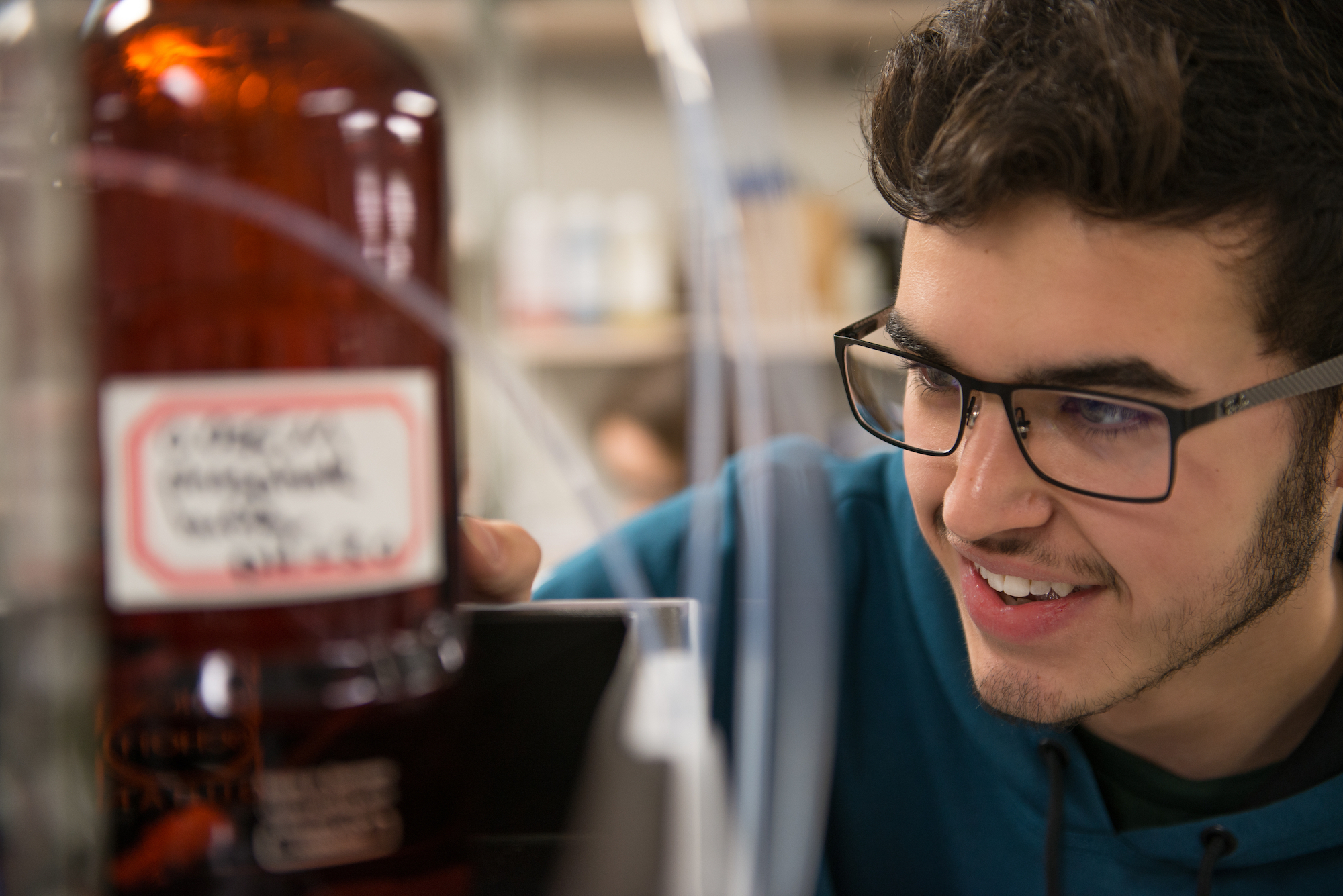A Century of Chemistry
After a century of change and innovation, the chemistry department maintains its mission.

Concordia celebrated the century mark for its chemistry department on March 9 in the new Integrated Science Center (ISC) with an all-day gathering of former and current chemistry students, faculty, staff and friends of the department. The celebration, “A Century of Solutions,” commemorated the rich history of the department, from its humble beginnings in 1916 as a one-man department to the strong program it is today in its new home.
As one might expect, a lot has changed in the last century, but it’s the technological advances of the last two decades that has made the department a staple of Concordia’s science curriculum. These advances serve as an example of how education at Concordia is changing with the times. Chemistry professor Dr. Mark Jensen has been teaching at Concordia since 1997 and notes that things are quite different now compared to when he first arrived more than 20 years ago.

“When I first started teaching in the mid-1990s, email was just catching on, the internet was relatively new to most of us, and no one had a mobile phone,” Jensen said. “Now most of my day-to-day communication happens through email, many of our textbooks, lectures and assignments are delivered online, and students use their smartphones for everything from recording lectures to taking quizzes.”
Perhaps the biggest change the department has seen is the new building it calls home. The ISC opened and was dedicated in fall 2017 and has created a buzz among students and faculty/staff on campus.
“It has certainly brought a whole new level of excitement to both students and faculty,” Jensen said. “The openness of the space means that everywhere you go you see activity – whether it’s in the classrooms, labs, study spaces, or the commons. In designing the building, we said we wanted to emphasize ‘learning science by doing science’ and I think that’s what people see.”

The $45 million project features dedicated labs for both research and teaching, and the space allows for more interactive and participatory learning. Students and professors now have the benefit of using a state-of-the-art facility for further research and growth.
However, a brand-new building, along with the numerous other technological advances, has not deterred the department’s commitment to molding young scientists.
“In the end, our goal still has to be a high-quality education for our students, and we have to make sure we’re leveraging these new technologies with this goal in mind. When I came to Concordia in 1997, I was a part of the ‘new’ generation of chemistry faculty,” Jensen said. “We were taking the reins from some legendary names like Ostercamp, Werth, Dinga, Homann, Dierenfeldt, and MacKellar. Now 21 years later, I’m proud that we’ve maintained their commitment to helping students recognize and realize their potential as both scientists and individuals. But this commitment means that we must continue to evolve with new ideas for new generations of students and I really think we’re doing just that.”
Published March 2018